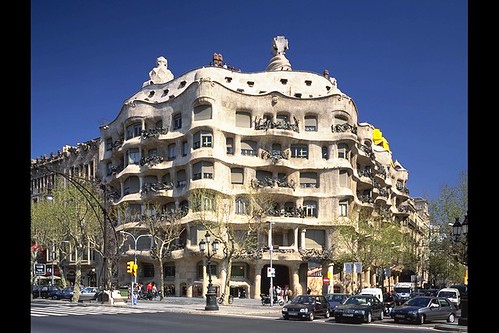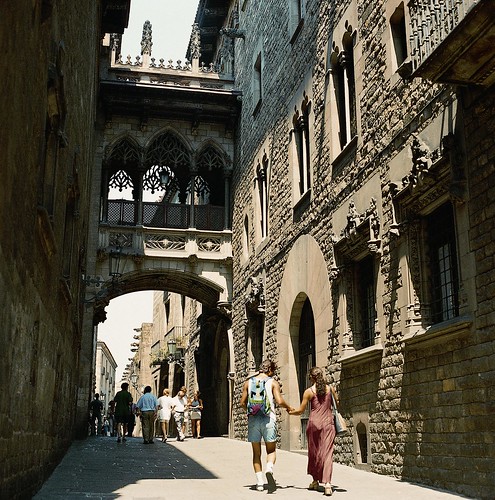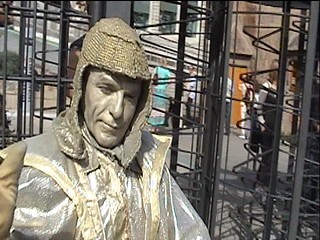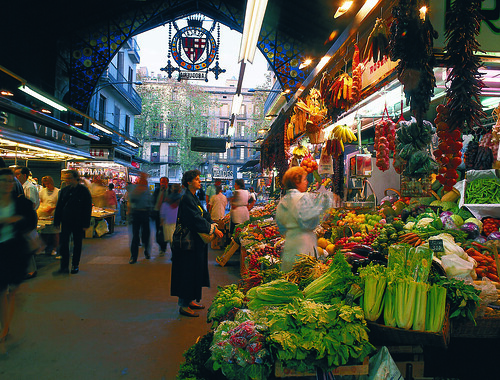Many Americans traveling to Spain for the first time visit Barcelona. This beautiful port city is situated in the autonomous region of Catalonia. But the city famous for the modernist architecture of Antoni Gaudi has been mired in chaos lately.

Barcelona's Casa Mila
In fact, since Oct. 1, 2017, nearly 3,000 major companies have left Barcelona. The violence and unrest propelled them to establish either new headquarters or branch offices in some of Spain’s other serene autonomous regions.
But unless you love Spain, as I do, or unless you’re a student of the Spanish language, history, and culture, the volatile situation is not clear. What is clear is that a region-wide election on Dec. 21 is expected to return Barcelona and Catalonia to normalcy.
Having traveled to Spain several times and having written about Barcelona’s famed cathedral, the Sagrada Familia and other landmarks, I’m hoping the election will usher in a new, democratic local government (the Generalitat) that works to preserve Spain’s unity.
Political predictions aside, I think it would be appropriate to relate a brief history on the rich and prosperous Catalonia region, which was once part of the vast and ancient kingdom of Aragon.
In the 15th century, when King Ferdinand of Aragon married Queen Isabella of Castilla y Leon, the Catholic couple united their kingdoms. The part of Aragon known as Catalonia was included in the merger.
Nevertheless, that was not the first time that marriage joined together the kingdom of Aragon and the region of Catalonia. In 1137, Count Ramon Berenguer IV of Barcelona married Petronila, queen of Aragon, which resulted in Catalonia and Aragon under one ruler.
Even so, Catalonia-a sliver of earth in northeastern Spain-was determined to preserve its Catalan language, history, and customs despite the union. Always at the forefront of commerce and culture, the city of Barcelona became the capital.

Barcelona's Barrio Gotico
Yet Catalonia is not unique in preserving its language and culture while under the rule of the Spanish government. Valencia, its southern neighbor, also preserved its Valencia language and customs. Galicia, the farthest northern region, preserved its native Gallego language and celebrates its Celtic heritage and customs.
The Spanish Basque Region, which locals still call Euskadi, has also preserved its truly ancient language called Euskera. All of Spain’s 17 autonomous regions teach and speak the official language, Spanish.
Nevertheless, the autonomous regions where Spanish is the only language spoken have maintained traditions, customs, and a culture dating back to the Romans, Vithogoths, and of course, the Moors.
In a nutshell, the unification of all these kingdoms resulted in a single country. Yet the union has not been a happy one. Under the dictator Francisco Franco, 1939-1975, both the Basque region and Catalonia yearned for separation.

Street performer in Barcelona, Spain
A minority of Basque separatists took up arms against the Spanish government and initiated a reign of terror which lasted some 30 years. The Catalans have attempted independence from Spain throughout their history. Although this was repressed by the Franco era, it seemed to subside after he died in 1975.
Under Catalan leaders, Catalonia acquiesced to abide by Spain’s newly crafted democratic constitution of 1978. The Spanish Constitution granted 17 regions of Spain autonomy, with the central government based in Madrid. Catalonia and its provinces of Tarragona, Girona, and Lleida was granted autonomy in December 1979.

Barcelona's Mercado de la Boquerilla
Unfortunately, in the past few years, a minority has begun to clamor for independence from Spain. The Catalan Separatists, while not bomb-throwers like the now defunct Basque ETA organization, initiated their own reign of terror in Catalonia.
In a recent trip to Spain, a businessman told me he had lived in Barcelona for several years but had to flee to another part of Spain because he feared for his life. Like many Catalans who want to remain part of Spain, he was threatened for being pro unity! News accounts also relate that in Catalan schools, children are encouraged to hate Spain and reject learning the Spanish language!
The Catalan Separatists, referred to as “Independistas,” are doing a great disservice, I think, to their own children because outside of Catalonia, where is this language spoken? How will those future adults get jobs outside of their own region if they do not learn Spanish, the official language of Spain?
In summary, I would just like to see harmony and democracy return to the Catalonia region. The minority group (Independistas) bent on breaking away have for years used decidedly undemocratic tactics to try to gain their objectives. I pray that the general election in this region on Dec. 21, 2017, will bring an end to the conflict so that the millions of tourists who love this region can return.

Barcelona's Sagrada Familia
Note:
The author consulted various international media sources prior to writing this article. Print media included The Guardian and the New York Times. Radio reports were obtained from NPR.
The main television source covering the issue was RTVE, Radio Television Espanola daily newscast. Additionally, the author had face to face interviews about the situation with Spaniards while she was in Spain.
Rosie Carbo is the Lifestyles Editor for Wandering Educators, and is a former newspaper reporter whose work has appeared in newspapers and magazines nationwide. Some of those publications include People magazine, The Dallas Morning News, The Houston Chronicle, and San Antonio Express-News. Some of her features were redistributed by The Associated Press early in her career as an award-winning Texas journalist.
All photos courtesy and copyright Victor Carbo
